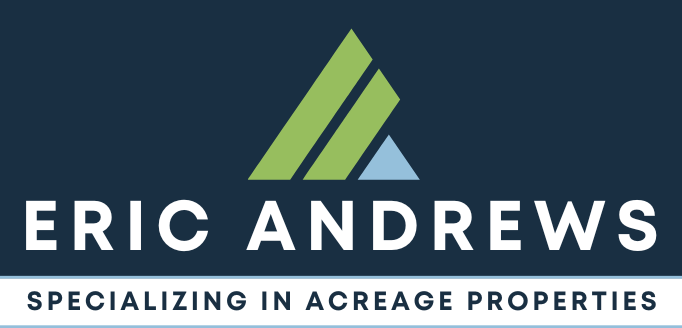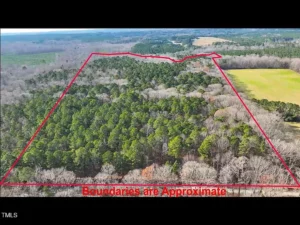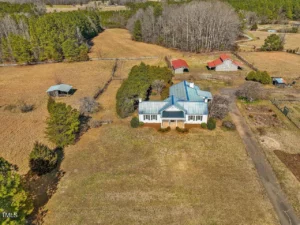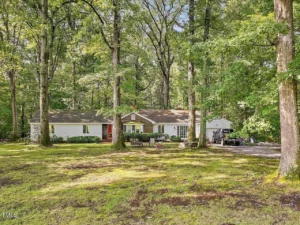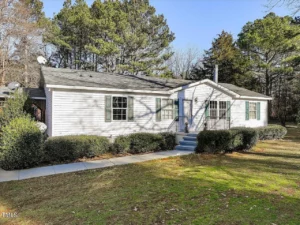Real Estate Expert Eric Andrews discusses Owner Financed Land, downpayments, interest rates and more in this video.
Speaker 1: Should buyers and buyers agents ask what the terms are when buying some land that could be owner financed?
Speaker 2: So with owner financing, we get asked that all the time, it’s nearly impossible to get a mortgage on raw land right now. All the big banks don’t want to do it. Most of the small banks don’t want to do it. You might be able to get the Farm Credit Union or State Employees to do it, but it’s not a very attractive product for the lending institutions right now. So owner financing is very, very common.
And so, when we advertise a piece of land and we say that owner financing is available, our phone rings off the hook. People want to know what are the terms? What are the terms? Well, people need to know that in the nature of real estate, that would be like saying the land’s a hundred thousand, what will he take? There’s no way to know. I mean, it’s a hundred thousand. You make an offer, and then you figure out. So when you ask me, “Eric, I see you’re doing owner financing on this. What will they take?” And with owner financing, you have to know that it’s a scale. And it’s a multi-level scale, and there’s so many ways you can manipulate it.
One of the things we’ve talked about before is the price. Well, I’ve done 150 owner financing deals now in my career, and all 150 have been full price. Okay? If you’re asking to borrow money from the seller, you’re going to pay the full nut. You’re not going to get a break. I mean, it just doesn’t work that way. But you can offer less if you want to, I’m just saying, if you do owner financing, it’s kind of considered a bad etiquette to say, “Hey, you know what? The property you’re asking a hundred thousand dollars for, I don’t think it’s worth a hundred thousand. I’m only going to get you 90,000. And by the way, can I borrow that 90,000 from you?” So just know, going into it, owner financing, you’re going to pay full price.
The other thing is the down payment. And, when somebody does owner financing, they’re going to want walk away pain. They’re going to want you to put a big chunk of change down. The agent on land is probably charging 10% commission. So if you offer 10% down, the sellers get nothing. The commissions are all going to the agent, so that’s not attractive. So, usually the minimal standard right now is 20% down. So, a hundred thousand dollars piece of land, you’re putting 20 grand down, the seller’s happy with that because he’s getting the same amount as the agent. And also the seller’s happy because they feel as though the buyer is committed 20% down as walk away pain. And they don’t feel as though it’s going to be for not.
The interest rates, if you want to make something attractive, right now 5, 6, 7, even 8% interest is what we’re doing as far as owner financing. And, usually, back when lenders were doing land loans, the land loans were a point and a half to two points higher than a residential. So if a residential was 5%, land was usually 7%. Well, when the economy got real bad, and we’re still not getting a whole lot of money out of checking or savings, a lot of owners that were doing owner financing were matching what bank break was, even though banks weren’t lending on land, they were matching or whatever. So it was real common for us to be doing four and a half, 5% on land loans. Right now, probably six and seven is the more common, because people want their money to make more money a little bit quicker.
The other thing is amortization. When banks were doing land loans, they were doing 10, 15 or 20 year amortization, and everybody hears of the 30 year mortgage. That’s common in residential. It’s not so common with land. I encourage my sellers to do 30 year mortgages on land because less of the money is going toward principle, more of it is going toward interest. They have a bigger payoff when we do a balloon, I’ll talk about the balloon in a little bit, but that way my sellers are actually getting more money. If they do a longer amortization, less is getting paid toward the principle. And that makes it a little bit more bearable for the buyer too if they only can afford a smaller payment.
And then the next thing is the balloon. So you do that 30 year amortization, and right now the common are like 2, 3, 5 and eight year balloons. So you have a 30 year mortgage, but, at the end of two or three years, that note is going to be due in full. The seller can either agree to continue the loan or not continue the loan. You can try, hopefully, maybe things will get better with banks and you can get a loan yourself or you need to pay off the balance at that time. So, that’s why the balloon is so negotiable.
So when somebody says, “what are the terms?” And you can see how, maybe I’m only paying you 5% interest, and you’re thinking that’s a little low, but if I do a two year balloon, you’re getting your money pretty quick. And so that is how the scale is tripped a little bit and everything. If I say, “you know what? I got an eight year balloon, but I’m going to pay you 8% interest.” You’re like, “damn, I have to wait eight years for you to pay this off.” But 8% interest is a really, really nice appreciation or money on top of the loan. So that makes it more attractive.
So there’s all these things where you’re tipping the scale one way or another. So when an agent or a buyer says, “what will they take?” You know, I hate getting into that situation because if I can say what the going rate is, and I can give all those explanations of what’s happening right now, but then I get into these little tiny arguments. “Oh yeah. Well you said they would take 5%.” And I was like, “yeah, well you’re asking for a 12 year balloon.” I mean, it makes a difference. So I don’t like to get into the minutia of all that. I can tell people what the going rates are right now. I’m lucky, I do about a dozen of these a year, so I feel as though I’m very experienced as far as owner financing, but you have to figure out what works for you as a buyer, or your client, and then we can see whether or not that’s acceptable to the seller.
